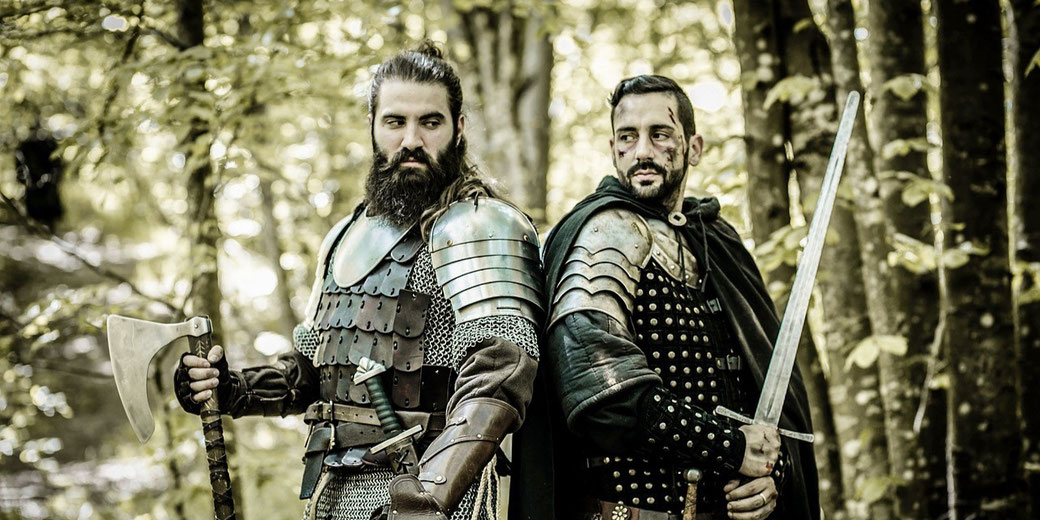Elite Byzantine Vikings: The Varangian Guard

When loyalty became a rare and precious commodity in a crumbling imperial court, emperors turned to an unlikely source: warriors from the far north, who were known for their strength and fierce code of honour.
These men both protected the throne and became part of the empire’s mythos, and earned a legendary status in both eastern and northern chronicles.
Who were the Varangians?
The Varangian Guard can first be traced to the tenth century. By this time, Norse warriors called Varangians in Greek sources who often came from Sweden had already made their presence known along the rivers of Eastern Europe.
They followed the Dnieper and Volga river routes, established trade connections, took service with local rulers, and settled in key cities such as Novgorod and Kiev.
Under Prince Vladimir of Kiev, Norse influence fused with the Slavic ruling elite to form the Kievan Rus.
In 988, when Vladimir converted to Christianity and cemented an alliance with the Byzantine Empire through marriage to Princess Anna Porphyrogenita of Constantinople.
He also sent a substantial force of warriors to serve the emperor: a number often cited as 6,000 though this figure is debated.
This unit formed the nucleus of what would become the Varangian Guard.
Under Emperor Basil II, who ruled from 976 to 1025, the Varangians became a permanent part of the Byzantine military.
Basil II, who faced internal uprisings and external threats, particularly valued their loyalty.
During the suppression of the rebellions led by Bardas Phokas and Bardas Skleros, the Varangians proved themselves indispensable.
Since they had no ties to Byzantine noble families, they had fewer reasons to participate in palace conspiracies.
In return for their service, the Varangians were paid handsomely and allowed to plunder enemy cities during campaigns.
Their most iconic weapon was the long-handled, single-bladed axe, often called the Danish axe, which could reach over a metre in length and was capable of cleaving through shields and armour with terrifying effectiveness.
Military prowess
The Guard quickly developed a reputation for both battlefield ferocity and unshakable loyalty.
They fought in Basil II’s brutal campaigns against the Bulgars, in campaigns such as the Battle of Kleidion in 1014, where Basil earned the epithet “Bulgar-Slayer.”
Varangians were often used as shock troops in siege warfare and rear guards during retreats.
Their imposing stature and foreign appearance intimidated opponents, and their proficiency in close combat made them formidable in both attacks and last-resort defence.
By the eleventh century, the Varangian Guard’s composition began to change. As the supply of Norse warriors from Kievan Rus declined, the Byzantine emperors looked elsewhere.
The Norman conquest of England in 1066 produced a large number of English and Anglo-Danish warriors unwilling to serve under William the Conqueror.
Many of them sailed across Europe and entered the service of the Byzantine emperor, particularly under the reign of Alexios I Komnenos.
By the early twelfth century, the Guard included thousands of Anglo-Saxon exiles who brought with them a strong tradition of discipline and cultural pride.
English names began to appear in Byzantine records, and runic inscriptions carved by Varangians have been found in places like the Hagia Sophia, including one that reads “Ári made this.”
Political power
During official parades and state functions, they accompanied the emperor in full armour and wore decorated cloaks and carried their distinctive axes.
They guarded the imperial palace, the emperor's personal quarters, and the imperial treasury.
During victory processions, they lined palace halls and sang praises for the emperor in Greek and Old English.
Their oath of loyalty was to the emperor alone rather than to the state or any Byzantine group.
Their loyalty was tested on many occasions. They suffered a devastating defeat at Manzikert in 1071, when the Byzantine army was crushed by the Seljuk Turks.
They also participated in the civil wars of the twelfth century, though their involvement always showed their commitment to the current emperor.
In 1122, they helped defeat the Pechenegs at the Battle of Beroia. In 1204, during the Fourth Crusade, the Varangians defended Constantinople as it came under siege by fellow Christians.
According to several accounts, they held their section of the wall with fierce resistance, even as the rest of the city fell into chaos and betrayal.
What happened to the Varangian Guard?
The fall of Constantinople to the Crusaders in 1204 saw the start of the Varangian Guard's decline.
Although they returned under the Nicaean emperors and again after reclaiming Constantinople in 1261, their numbers and status had declined.
Under Emperor Michael VIII Palaiologos, some foreign guards continued in service, but they were increasingly replaced by Catalan and Turkish mercenaries.
The rise of new mercenary companies and military strategies that shifted in the late Byzantine period reduced their importance.
The last references to the Guard appear in the fourteenth century, by which time their original Norse and English character had disappeared.
What do you need help with?
Download ready-to-use digital learning resources
Copyright © History Skills 2014-2025.
Contact via email
With the exception of links to external sites, some historical sources and extracts from specific publications, all content on this website is copyrighted by History Skills. This content may not be copied, republished or redistributed without written permission from the website creator. Please use the Contact page to obtain relevant permission.





